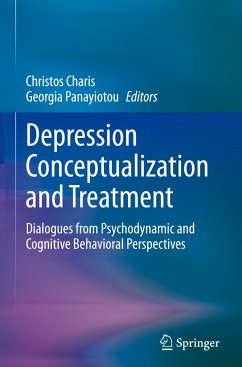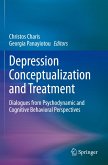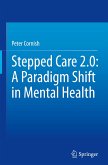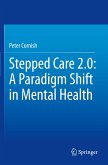Depression, a highly common clinical disorder, is an important and clinically relevant topic for both clinical researchers and practitioners to address, because of its prevalence, impact on the individual and society, association with other mental and physical health problems and the social contexts in which it develops. Depression ranks in Germany and central Europe as the third among the leading mental disorders and world-wide is a leading cause of disability. It is estimated that 8.3 % of the German population is depressed within a year (11.2 % women, 5.5 % men). These statistics mean that 4 million people per year are depressed in Germany alone (one year prevalence). According to the WHO, over 300 million people world-wide experience depression and in the USA the financial burden of this disorder, due to disability and work absenteeism, reaches Depression is also becoming more frequent over time and has a high risk of recidivism -particularly since its most common form, Major Depressive Disorder (DSM-5; ICD10) tends to occur in episodes. For example, 20% to 40% of people become depressed again within two years after their first depressive episode, meaning that a major aim of any therapeutic intervention should be to prevent future relapses. Depression also shows very high comorbidities with other mental and physical health conditions. Its overlap with anxiety pathology is so high that clinicians are concerned with whether the two disorder categories are indeed distinct or if they show substantial etiological overlap. Depression is also associated with heart disease and even cancer, making it a risk factor for mortality and morbidity that needs to be identified early and addressed effectively. In addition to Major Depressive Disorder, the often severe Bipolar Disorder, and the chronic form of Depression referred to as dysthymia are additional mood disorders that among them require careful differential diagnosis. They also lead to questions regarding their common or distinct etiological mechanisms.
In order to gain a better understanding of Depression as a clinical disorder, one needs to look at it as a multifaceted phenomenon. Depression is a neurobehavioral condition, and one has to be up to date and have solid understanding of its biological substrate, at a genetic, neuronal, hormonal and pharmacological level. Depression is also a socio-demographic phenomenon, and one needs to examine its epidemiology, that might contain significant cues towards its clearer understanding. It is more prevalent, for example, in certain regions, climates, age groups and genders (much more prevalent in women, with age of appearance in young adulthood but also presents as a significant problem for youth and the elderly), is associated with stereotypes and stigma and can be the aftermath of crises, trauma and loss.
The etiology of Depression remains under scrutiny, though recently much more knowledge is emerging from contemporaryneuroimaging, genotyping and data science methods. Different neural and behavioral systems may be involved contributing to the significant heterogeneity within the disorder. Social roles, stressors, attachment patterns, family support and social networks, and individual (e.g. gender linked) vulnerabilities may contribute significantly towards increasing risk for developing depression. Different therapeutic approaches, like those stemming from the psychoanalytic/psychodynamic perspectives and those stemming from the cognitive/behavioral (2nd and 3rd wave) tradition focus on the components of etiology considered most dominant. As science progresses with clearer evidence regarding the important etiological factors and their interactions, these different perspectives, each with its own contribution, may need to take new developments into consideration, adapt and even begin to converge.
These different aspects of the topic of Depression, which ar
In order to gain a better understanding of Depression as a clinical disorder, one needs to look at it as a multifaceted phenomenon. Depression is a neurobehavioral condition, and one has to be up to date and have solid understanding of its biological substrate, at a genetic, neuronal, hormonal and pharmacological level. Depression is also a socio-demographic phenomenon, and one needs to examine its epidemiology, that might contain significant cues towards its clearer understanding. It is more prevalent, for example, in certain regions, climates, age groups and genders (much more prevalent in women, with age of appearance in young adulthood but also presents as a significant problem for youth and the elderly), is associated with stereotypes and stigma and can be the aftermath of crises, trauma and loss.
The etiology of Depression remains under scrutiny, though recently much more knowledge is emerging from contemporaryneuroimaging, genotyping and data science methods. Different neural and behavioral systems may be involved contributing to the significant heterogeneity within the disorder. Social roles, stressors, attachment patterns, family support and social networks, and individual (e.g. gender linked) vulnerabilities may contribute significantly towards increasing risk for developing depression. Different therapeutic approaches, like those stemming from the psychoanalytic/psychodynamic perspectives and those stemming from the cognitive/behavioral (2nd and 3rd wave) tradition focus on the components of etiology considered most dominant. As science progresses with clearer evidence regarding the important etiological factors and their interactions, these different perspectives, each with its own contribution, may need to take new developments into consideration, adapt and even begin to converge.
These different aspects of the topic of Depression, which ar








